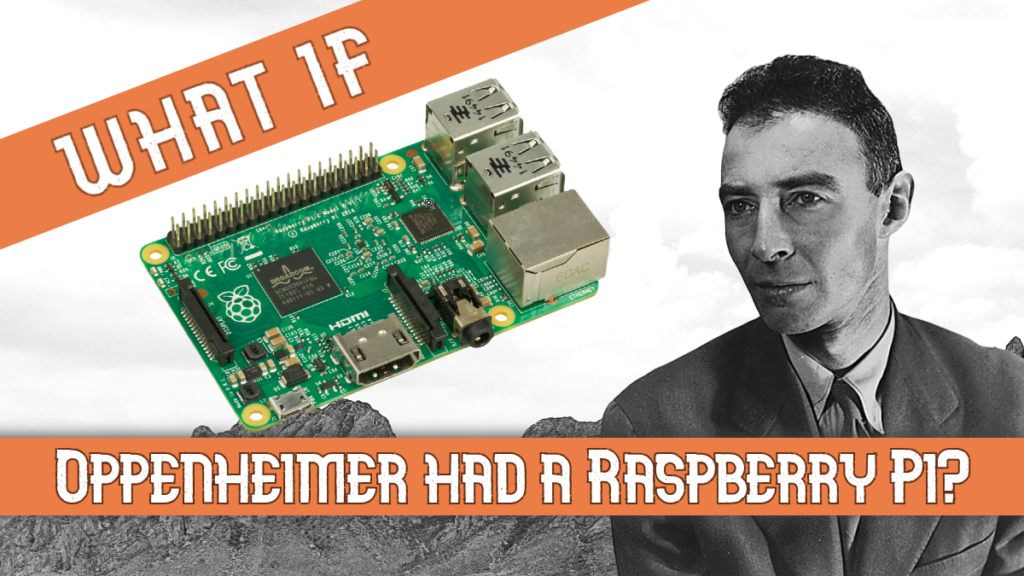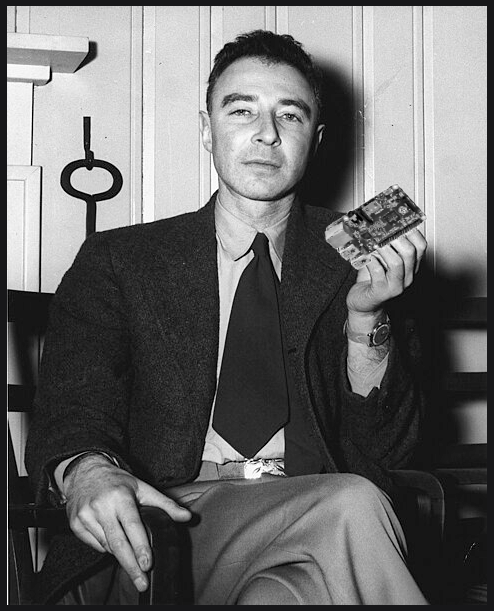What if Oppenheimer had a Raspberry Pi?

J. Robert Oppenheimer is at the front of everyone’s minds at the moment.
But what would have happened if Oppenheimer had had access to a Raspberry Pi?
As head of the Los Alamos Laboratory during the construction of the first nuclear bomb by the United States, Oppenheimer gathered together scientists in New Mexico to work around the clock and clandestinely.
Interestingly, there were two types of computers used by the Manhattan Project: punch-card machines produced by IBM and so-called “human computers“.
These “human computers” were people who did the calculations for the project, people like Jean Dow Bacher, Josephine Elliot, and Kay Manley, among others.
While these people and the machines they worked with were able to work rather quickly, their speed doesn’t even come close to the speed of a Raspberry Pi.
So what if we could go back in time and surreptitiously hand Oppenheimer a Raspberry Pi, which would be the most powerful computer he would have ever seen?
WARNING: The following is merely a playful story on how that might look.
Let’s imagine that you find yourself in possession of a time machine and take it back to Los Alamos in 1943.
As the rumbling of the time machine slows, a robotic voice announces your successful transportation to New Mexico 80 years ago.
With a bit of wriggling, the vacuum-sealed door lurches open and you’re greeted by blinding sunlight and heat.
With your Raspberry Pi 4B (with 4GB – more memory than all the computers in the world at the moment) in your pocket, you set off looking for none other than Oppenheimer himself.
Walking along the wooden planks that substitute for a sidewalk, you see short, makeshift houses flanked by clotheslines. Children run between the clothes. The wind offers a respite from the sun.
Suddenly, luck strikes and you spot the tall man in his wide tie and brimmed hat. His head hangs down, lost in thought.
You approach quickly, he barely notices you.
“Dr. Oppenheimer, I need to speak with you.”
He continues walking, without slowing down. In fact, it seems like he’s speeding up.
“Make it quick. I’m busy,” he mutters.
“I’m from the future and I have to show you something,” you reply. You reach into your pocket and pull out your magnificent Raspberry Pi.
Oppenheimer glances over and stops dead in his tracks.
His eyes widen. “What is that?”
“It’s a single-board computer that features a 64-bit quad-core processor, dual-display support at resolutions up to 4K via a pair of micro-HDMI ports, hardware video decode at up to 4Kp60, up to 4GB of RAM, dual-band 2.4/5.0 GHz wireless LAN, Bluetooth 5.0, Gigabit Ethernet, USB 3.0, and PoE capability (via a separate PoE HAT add-on),” you answer confidently.
“I didn’t understand a single word of that.”
He leads you to his office, where you both sit down and discuss the advances in computing over the past eight decades.
Holding the Raspberry Pi by the sides, as you always ought to do, Oppenheimer marvels at the green board.

“What are these?”
“Those are USB ports.”
“And this?”
“That’s to plug in headphones.”
“Fascinating,” he says as he leans back in his chair.
He pauses for a moment and then stands up and begins to laugh, “We could increase the speed and accuracy of all of our calculations! We could process data and run simulations! We could use its power to develop our models!”
“Or you could build a tea bag soaking machine!” you interject.
“The possibilities are endless!” he roars in delight.
As the day drags on, Oppenheimer listens to your descriptions of contemporary technology with enthusiasm. You regale him with stories about life in the 21st century.
With the sun setting, you decide that it’s time to return to 2023 and wish him well. He walks you back towards your time machine.
Stepping in, you tell him, “Just be sure to be careful with that Pi, since it’s the only one I brought.”
“Of course,” he nods, “I just have one final question before you go.”
“Anything, Oppie.”
“How can I monitor and control my Raspberry Pi with an easy and accessible web interface?”
He’s holding his hat in his hands with obvious uneasiness.
With a knowing smile, you turn your head towards the sky. Then you lean in towards him and whisper into his ear, “PiCockpit.com“
And with that, you push the door closed and set the controls for the heart of 2023.
Oppenheimer, meanwhile, watches as your time machine begins to spin and is enveloped by a bright light before quickly disappearing.
“PiCockpit, huh? I suppose that’s how I’ll be able to check the air quality and air pressure in a given room. I can also dim lights with an intuitive display. I’ll also be able to control and read the GPIO pins on my Pi. Moreover, I can do all of that without touching a single line of code. And best of all – it’s free for up to five Raspberry Pis and I only have one!”
And with that, he walks back home, gently putting the Raspberry Pi in his pocket, and gets some much needed rest.